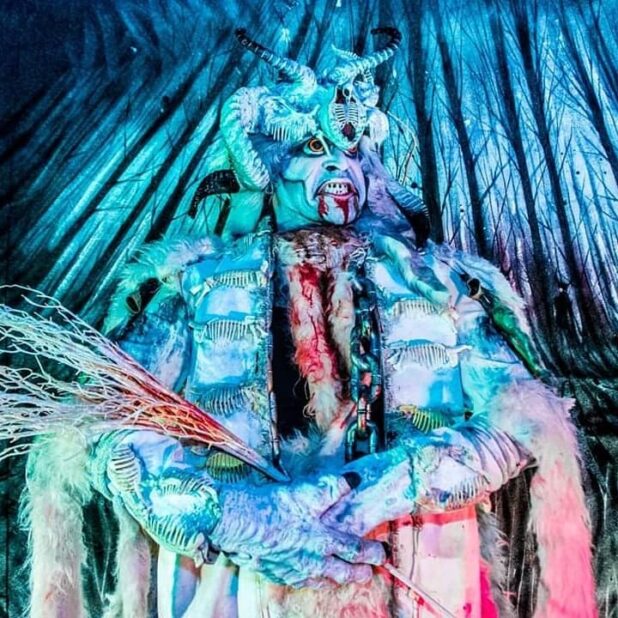General News
Krampus is coming to town
December 24, 2020

Dec. 24, 2020
By Mike Riley
Local Journalism Initiative Reporter
Growing up, no doubt you were told that if you weren’t good all year, you’d get either nothing for Christmas from Santa Claus, or perhaps you’d luck out and get a lump of coal in your stocking. In many European cultures however, children were admonished that if they weren’t good throughout the year, a horned, fanged devilish creature with a long tongue would come and whip them with branches and chains, and take them back to his hellish lair. That creature’s name was Krampus.
Krampus was the polar opposite to St. Nicholas, who Santa Claus is based on. Jolly St. Nick would reward good children with sweets and gifts, while Krampus was not nearly as benevolent, punishing the bad children for their misbehaviour throughout the year.
Krampus’ roots go all the way back to pre-Germanic paganism. With a name that comes from the German word krampen, which means claw, you don’t exactly expect him to be all cute and cuddly. Krampus is said to be the son of Hel in Norse mythology. Hel was a goddess who ruled over the underworld. From his pagan roots, he eventually became a sidekick to St. Nicholas in the Christmas tradition, the yin to St. Nick’s yang.
Krampus was banned in short-lived attempts by the Catholic Church in the 12th century and the Nazis in 1934 due to his resemblance to the devil. Yet in spite of this, he maintained his status as a feared yet beloved holiday presence to the present day. In southeast Austria, parents would even hang birch twigs on the wall for the duration of the year, to remind their kids to be good or else Krampus would come for them.
Krampus began to be commercialized after 1890 in Germany and Austria, and Krampus postcards became all the rage, with slogans like Gruss vom Kramps (Greetings from Krampus) or Brav Sein (Be Good). While the Krampus tradition has remained fairly constant in Europe, it has only been in the last decade that it has caught the imagination of people in North America. There have been Krampus movies like Krampus from 2015, TV show episodes with a Krampus theme like Supernatural, books like Clement Gore’s The Krampus Night Before Christmas, Krampus runs, where people dressed as Krampus run through the streets swatting people with branches, and boisterous parties like the Krampus Ball in Toronto.
James Zirco Fisher is a composer, designer and performer with the band Squid Lid, who has been organizing and putting on the Krampus Ball in Toronto for the past nine years. Due to COVID-19, the ball was cancelled this year, but they have a Krampus Hunt [a scavenger hunt through High Park] that is going on until Christmas Eve, the only event they’re doing in 2020.
“I’ve known about Krampus for over a decade. My old band mate showed me YouTube videos of the wild European parties,” he says. “I just love the idea of an alternative to the standard good will and cheer that comes out of all the stores at this time of year.”


















